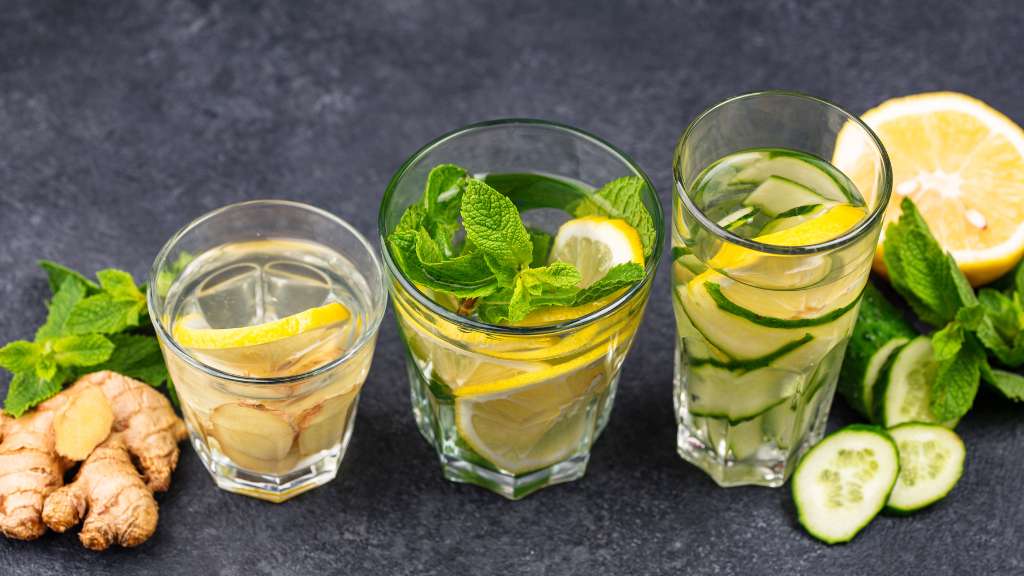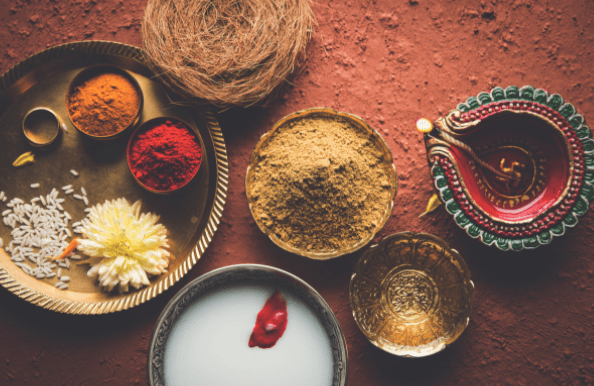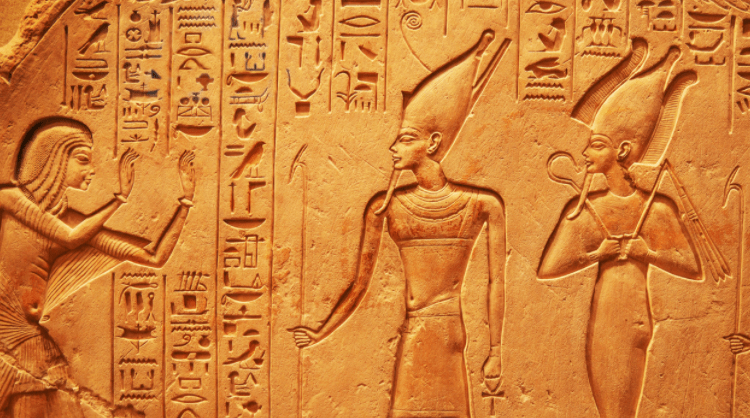By Dr. Sarah Bennett, NMD / September 17, 2020

Detoxification is a process by which the body naturally eliminates toxins and poisons.
Today, endless products, procedures, and diets are said to help this process and help eliminate waste from the body.
Although the modern day detox or cleanse is controversial, deemed unnecessary, or even a “scam” by many medical and research professionals, certain vitamins, nutrients, foods, and more have been shown to assist in all phases of the body’s detoxification process.
Despite the controversy, cleansing and detox practices are no new fad or trend.
Numerous detoxification practices have been used across cultures worldwide dating back thousands of years. To be exact many of these practices date back to 2000 B.C.E, and were documented to have been used in Ancient Egypt, China, India, Early America, even the Roman Empire.
And to top it off, many of the practices are still used as modern medical procedures in our hospitals today.
To avoid getting caught up in this polarizing controversy, let’s review the history and science of detoxification.

Ayurvedic medicine, one of the oldest traditional medical systems can be traced back since 200 B.C.E. Believing that toxins are one of the root causes of illness, Ayurveda frequently relied on detoxification to achieve healing.
“Pancha karma”, translated meaning five actions, is a five step Ayurvedic detoxification process used to achieve health of the body, mind, and consciousness. Virechan, Vaman, Basti, Rakta moksha, and Nasya are the five actions performed to complete this process. All utilizing a different route of detoxification:

Traditional Chinese Medicine utilizes cupping and acupuncture to regulate energy flow throughout the body. It is believed that these treatments help to cleanse the body of dysfunctional energy flow resulting in mental and physical healing.(2)
These methods are still used today by modern acupuncturist, chiropractors, and even naturopathic physicians.(2) Research has found significant benefit in treatment of many conditions including but not limited to pain, COPD, and Insomnia. (1,2,3,4)
Although more research is necessary to determine the exact mechanism of action, acupuncture and acupressure are shown to have therapeutic benefits due to stimulating the endogenous opioid system, and improving blood flow perfusion of the periphery and organs of the body. (1,2)

In Turkey and Mongolia restrictive diets were used for days to weeks to stimulate detoxification.
Similar to the cleansing diets of today, food containing sugar, salt, gluten, oil, meat, dairy and alcohol were commonly avoided throughout the completion of these diets. (5)
In addition to using dietary cleansing to heal the physical body, these cultures frequently use spiritual cleansing called limpias. Limpias meaning “to clean”, is a ritual utilizing herbs and fruits to purge the body, mind, and soul of negative energies. (5)

The modern day enema has been dated back to the time of Ancient Egypt.
Egyptians used enemas for detoxification and for administration of medications.
Enemas are administered by injecting fluid into the rectum through the anus to either administer medication or stimulate the excretion of waste through the bowel.

Many native american tribes have performed detoxifications rituals for centuries. These detoxification rituals primarily focus on 3 components: fasting, smudging and sweat lodges.
Fasting, a common practice in many cultures, is used by Native Americans to help burn off the glucose and fat to improve elimination of toxins from the body. At present, fasting is still widely used for these very same purposes. In addition to stimulating weight loss and detoxification, fasting has been shown to have additional benefits of improving the immune system, decreasing risk of cancer.(6)
Smudging is the spiritual practice of burning herbs and essence to clean or purify the air. Herbs like sage have been used by the Native Americans which they believed release negative ions that act to improve the mood of people. (7)
Sweat lodges are small buildings used by the Native Americans to perform purifying ceremonies for spiritual and physical healing. These lodges are similar to the modern day sauna used to stimulate sweating as a form of detoxification. Sweat lodges ceremonies are still practiced today, but keep in mind that they can be dangerous even leading to death if the lodge is set up improperly. (8)

The coffee enema is believe to have been developed by german physicians in the 1900s, originally to be used as a treatment for cancer.
Max Gerson, a German-american physician developed a detoxification program utilizing coffee enemas, supplementation, and an organic plant based diet to stimulate healing.(9)
The coffee enema injects one liter of coffee solution into the rectum. Active compounds from the coffee such as palmitic acid are absorbed from the GI tract into the bloodstream. It has been shown to increase glutathione S-transferase levels, an important enzyme that aids in the elimination of harmful free radicals. In addition, coffee enemas have been shown to open the bile ducts to further eliminate waste from the body.
The medical use of detoxification is not just a thing of the past. Detox protocols are used daily in modern american hospitals to treat ill and poisoned patients. The protocols utilize natural vitamins and nutrients to help the body detox and regain health.
It is well known that alcohol is addictive. This is because alcohol is a nervous system depressant that with chronic abuse will decrease the receptors for the “drug”, ultimately leading to tolerance or the need for more “drug” to achieve the same effect.
Over time, with higher and higher tolerance it becomes dangerous to suddenly discontinue the use of alcohol. This is why there are detox programs and protocols for alcoholics.
To achieve safe detoxification certain medications such as benzodiazepines will be used to stabilize the nervous system, preventing seizures.
In conjunction, oral and IV fluids, and B vitamins are administered to improve neurological health and decrease chances of severe complications.
More specifically, vitamin B1, also known as thiamine is commonly deficient in alcoholics due to alcohol’s inhibiting effects on absorption through the GI tract.
It is important to administer Vitamin B1 for proper detoxification and healing, to avoid the development of wernicke-korsekoves syndrome, a neurological condition causing acute and chronic psychological symptoms. (10)
Unfortunately, drug overdose is a not so uncommon occurrence in modern day society. Detoxification therapies are frequently used to aid in recovery of overdose.
Although, the detoxification method depends on which drug caused the overdose. Natural therapies are commonly used for effective detoxification and treatment.
For example, N-acetylcysteine (NAC) is the known antidote for the treatment of acetaminophen (Tylenol) overdose. Administering NAC within 8 to 10 hours of ingestion has been shown to prevent liver failure. (11)
So why is NAC so effective? It is an amino acid precursor to glutathione. The primary antioxidant of the body and essential component of detoxification through the liver. Although, more research is needed, it is thought that high doses of NAC are converted to glutathione and bind to toxic metabolites of tylenol for safe and effective detoxification. (12)
Although generally accidental, poisoning incidents are frequent and widespread. Detoxification methods are often essential for prevention of severe complications.
Again, similar to drug overdose the method of detoxification depends on the poison.
Detox methods commonly include:
If you suspect that you or a loved one are suffering from accidental poisoning call poison control at 1-800-222-1222.
As you can see, detoxification practices have not only been used as an important aspect to healing across cultures for thousands of years, but is still a significant part of mainstream modern medical protocols.
Cleansing or detoxification is not a new fad or trend, but has a very real part in healing the body.
This being said, not all cleanses, supplements, diets, and procedures provide equal value. Also, different types of cleansing may be more appropriate depending on what type of toxin is being eliminated from the body.
If you want to jump to any of what we have discussed above, here are links you can click on:
To understand what type of detoxification may be appropriate for you and the details of how cleansing can benefit the body read our articles…
Hello, my name is Dr. Sarah Bennett, NMD!
I am a naturopathic physician licensed in the state of Arizona currently practicing at my office in Scottsdale, AZ. I received my degree from Southwest College of Naturopathic Medicine, did a year residency at Keystone Natural Family medicine, and received additional training for aesthetics & anti-aging at National Laser Institute.
My passion and fascination for natural medicine began during my undergraduate studies at Indiana University where I got a dual degree in neuroscience & psychology.
I saw how a preventative approach could help you live a long and youthful life. Since then I have dedicated my life to serving others to understand the latest medical trends.
I spend my spare time running, hiking, rock climbing, camping, testing out new diets, and reading books on latest medical trends / listening to podcasts to find the latest nuggets of knowledge to improve the quality of life for my patients. I look forward to serving you!